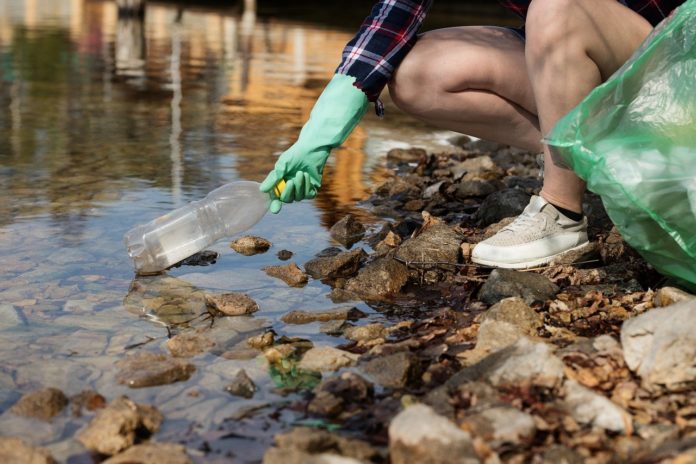From the oceans to the atmosphere and everywhere in between, plastic pollution is all around us. It’s the most common pollutant found on beaches, and there’s growing concern around the world about the negative effects plastic can have not just on the environment, but also on human health.
Canada has long been committed to reducing plastic waste, with many Canadian scientists looking into safer, more sustainable alternatives. But even if immediate and significant actions are taken towards tackling our plastic problem, how much can we reasonably expect to reduce our pollution levels over the next few decades?
To answer this question, a team of researchers created models to track worldwide plastic waste pollution. The study included contributions from the University of Victoria and the University of British Columbia, and was published in Science.
How much can we reduce our current levels of plastic pollution?
A growing body of research has pointed to the dangers and detrimental effects of plastic pollution, and a number of solutions — ranging from local to global levels — have been proposed. These solutions typically focus on either post-consumption management (in other words, ways of dealing with plastic pollution after it’s created) or replacing plastic with alternative, more environmentally-friendly products.
But while many different solutions have been proposed, a large-scale, global approach to tackling plastic pollution is not yet in place. Designing such an approach would require insight into which solutions are best poised to mitigate the effects of plastic pollution, which is why the authors of this study decided to investigate the long-term potentials of various plastic pollution solutions.
To do this, the authors created models that tracked predicted levels of plastic pollution over time for varying mitigation strategies. Their models included different types of plastics, including tires, plastic pellets, and personal care products, among others.
They also took into account how realistic various mitigation strategies are. For example, not all countries can currently afford to fully switch to plastic alternatives.
The authors then created five different scenarios that they modelled between the years 2016 and 2040. These ranged from a “business as usual” scenario, in which nothing was changed about the world’s current plastic pollution mitigation response, to a “system change” scenario that implemented a wide range of interventions strategies. Among these strategies were increased plastic collection capacities, a reduction of worldwide plastic use, and increased substitutions of plastic alternatives.
Even the best-case scenario doesn’t seem all that great
The good news is that in the best-case scenario — where significant global efforts are made to reduce plastic pollution — the total amount of plastic waste found throughout the world will be reduced dramatically. Unfortunately, this best-case scenario still led to five million tons of plastic being produced each year, for a total of 710 million tons by the year 2040.
Even with significant mitigation strategies and increased usage of plastic alternatives, many sectors will continue to rely on plastic for the foreseeable future. Plastic plays an important role in the medical industry, and single-use plastics such as pipettes and gloves are sometimes a necessity in research laboratories. There are even some cases where plastic packaging for food and water is a necessity: emergency response situations, for example, where refrigeration may not be available.
For this reason, the best-case scenario proposed by the authors of the study includes strategies not just for plastic reduction, but also for improved plastic waste management. But the authors note that it could take years for these strategies to be implemented, and that many regions around the world simply aren’t equipped for improved plastic waste management.
A particular problem the authors identified came from regions that currently burn plastic waste as their main waste management strategy. Burning plastic waste not only introduces greenhouse gases into the atmosphere, but it also leads to the release of microplastic particles that can have additional negative impacts on the environment and human health. Innovative solutions will be required to help these regions switch to safer waste management practices.
“The higher the [population] density, the easier it is for […] services to be provided,” said Winnie Lau, lead author of the paper and senior manager at Pew Charitable Trust. “Obviously, high-income places have more services they can provide, and low-income places don’t have as much resources to pay for services like waste management.”
This means that over the next 20 years, the amount of plastic waste found in the environment will increase. And even in the best-case scenario, hundreds of millions of tons of plastic waste will be produced by the year 2040.
This may sound grim, but in the “business as usual” scenario, these numbers were significantly higher: 29 million tons of plastic would be produced each year, for a total of 1.8 billion tons by the year 2040.
Swift, significant action needed to reduce plastic pollution
“The good news is, if you do something, it makes a difference,” said Lau. “People need to know that if I do something, I’ll make a difference.”
Reducing plastic pollution will have a positive impact on the environment. But another positive outcome of the “system change” scenario proposed by the authors is the creation of new jobs, because increasing the number of plastic waste management facilities worldwide will require many employees across a variety of sectors.
The results of this study underscore the importance of taking global, coordinated action towards reducing plastic waste. A number of strategies were suggested in the paper, and the authors suggest that a combination of pre- and post-consumption solutions is likely the best path forward.
“We […] want to highlight that there’s a real urgency here, and we really have to get a move on it,” Lau said.
While 710 million tons is still a worryingly large amount of plastic, it’s a vast improvement over what we could be facing if we don’t take action.










































